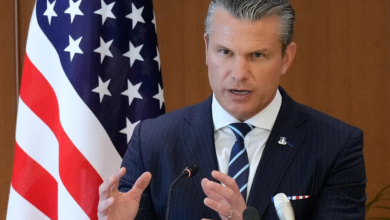Cultivos de coca en Colombia alcanzaron un máximo histórico


De acuerdo a la la Oficina Nacional de Políticas para el Control de las Drogas (ONDCP por sus siglas en inglés) del Departamento de Estado, Colombia cerró 2016 con 188.000 hectáreas de cultivos ilícitos, 18% más que el año anterior. Las plantaciones van en aumento desde 2012, cuando había 78.000 hectáreas.
En 1999, cuando arrancó la campaña antinarcóticos Plan Colombia auspiciada por Estados Unidos, hubo 123.000 con un pico en 2001 y una tendencia a la baja desde 2007.
Pese a los datos negativos, el ministro de Defensa colombiano, Luis Carlos Villegas, destacó que el ritmo al que aumentaron los cultivos se frenó el año pasado.
En lo que va de 2017 ya se han erradicado 6.100 hectáreas de cultivos ilícitos en todo el país, según el gobierno colombiano. La meta oficial es erradicar 100.000 hectáreas (250.000 acres) de coca este año.
“Tenemos en marcha un plan concreto y medible, con zanahoria y garrote”, dijo el presidente Juan Manuel Santos el martes en un discurso, en referencia al plan de que la eliminación de cultivos se haga, la mitad de manera forzada, sin alternativas visibles para los campesinos, y la otra mediante programas de sustitución de cultivos en el marco del acuerdo de paz con las Fuerzas Armadas Revolucionarias de Colombia (FARC) a finales del año pasado.
La implicación de la guerrilla en esta operación da cierta confianza a unos agricultores incrédulos acostumbrados desde finales de los 90 a que los proyectos queden “bajo la mesa”.
En Putumayo, en la frontera con Ecuador y uno de los departamentos más cocaleros del país, los campesinos aún temen que la coca desaparezca dejando la zona como un “desierto” de pobreza, como en la época de la fumigación aérea con glifosato, un método masivo para acabar con las plantaciones ilegales que fue suspendido en 2015 por sus efectos nocivos para la salud y el medio ambiente y con tan poca precisión que calcinaba lo que se encontrara por delante.
A mediados de febrero, el gobierno, las FARC y organizaciones campesinas de Putumayo firmaron uno de esos proyectos para sustituir la coca por productos como el maíz, el cacao o el café, que pretenden llegar a los 40 municipios que concentran la mitad de la coca.
El gobierno calcula que 82.000 familias en todo el país viven de esta planta y la ONU estima que cada campesino, primer eslabón de la gran cadena del narcotráfico, gana 1.180 dólares al año por su labor.
Aunque Estados Unidos adelantó que ve improbable la reanudación de la fumigación aérea, el gobierno de Donald Trump probablemente exija a Colombia que ataque estos cultivos de forma contundente.
El consumo de cocaína en Estados Unidos, principal destino de la droga colombiana, permanece prácticamente estable, según el informe.
VOA Noticias |




